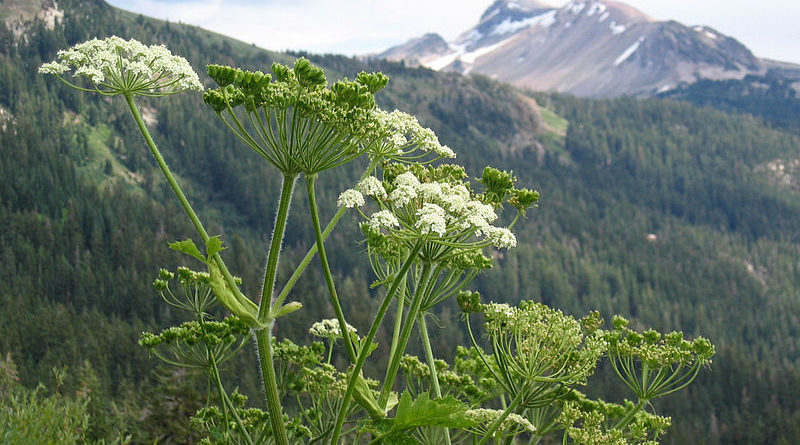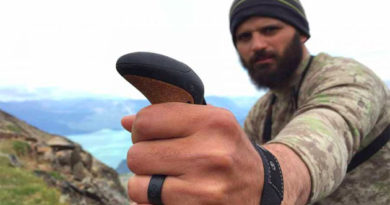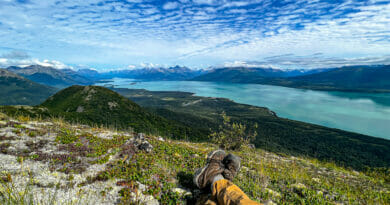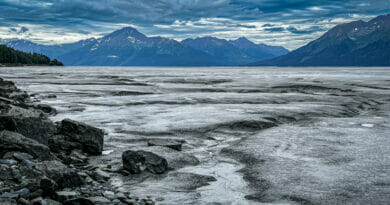Cow Parsnip Burn: Alaska’s Poisonous Plants
Cow parsnip burn can make or break an Alaska vacation!
We arrived at our weekend home away from home near Moose Pass about 90 miles south of Anchorage on the Seward Highway. It was a gorgeous setting for a weekend visit to Seward and the surrounding area. Our group of 9 decided on beds and rooms and then my kids and I went out to explore the backyard area which was nestled deep between the peaks on each side of us. We were so excited about the cool fire pit provided by the owners of the lodge.
 We walked about 30 yards back into the woods to start to gather fuel for the awesome campfire we were about to build. I noticed as I was walking through the muddy field to gather wood the beautiful cow parsnip in full bloom. I had forgotten what kind of damage this beautiful plant could inflict on the unaware hiker.
We walked about 30 yards back into the woods to start to gather fuel for the awesome campfire we were about to build. I noticed as I was walking through the muddy field to gather wood the beautiful cow parsnip in full bloom. I had forgotten what kind of damage this beautiful plant could inflict on the unaware hiker.
We built our fire and roasted our marshmallows and had a wonderful time in this amazing setting. We felt as free as the Eagle that soared over our cabin.
Later that night the back of my left leg began to itch.
The Effects of Poisonous Cow Parsnip Burn
I didn’t think too much about the itching at first. I assumed that I had been repeatedly bitten by the famous Alaskan mosquito or was just experiencing the effects of bare leg bush whacking in Alaska. But then the stripes began to appear. The itching got worse and a couple of blisters began to appear within the next 24 hours. And the itching got almost unbearable.
As I returned home the following week, the burn continued to worsen. In fact, it seemed to get worse for the next 2-3 weeks before I began to see the condition improve. That probably happened due to the exposure to the Southern Sun in late July, since the Cow Parsnip juices are photosensitive. I wish I would have had this article in July of 2016!
What is Cow Parsnip?
Cow Parsnip (Heracleum maximum), also known as Indian Celery or Indian Rhubarb, is found in most of the United States except the Gulf Coast area and surrounding states. It is particularly prevalent in Alaska and can grow in elevations between 0′ and 9000′. It is often confused with it’s look-a-like called the Devil’s Club.
Cow parsnip can reach up to a maximum of 7 feet tall, but is most commonly about 5 feet tall when in full bloom. The word Heracleum is also the word Hercules, which describes the very large parts of this plant. The thick succulent stems and huge white blooms make this a dominant plant in the Alaskan Bush. The blooms create a beautiful umbrella shape which can make a field as white as snow and make it very tempting to run through. Don’t do it!
The stems of the Cow Parsnip are succulent and when broken the juices from the plant spreads on the body and if you scratch or rub before you are aware of the exposure, you will make the burn worse and more spread out.
Why is it Poisonous?
 The stems of the cow parsnip contain furocoumarins, which cause the blistering and burning when the juices come into contact with the human skin. When the skin comes into contact with the juices, the skin will turn very red and often blister within a few hours. Itching and burning are very common with exposure. The chemical in the plant is photosensitive and will appear and worsen when exposure to ultraviolet light.
The stems of the cow parsnip contain furocoumarins, which cause the blistering and burning when the juices come into contact with the human skin. When the skin comes into contact with the juices, the skin will turn very red and often blister within a few hours. Itching and burning are very common with exposure. The chemical in the plant is photosensitive and will appear and worsen when exposure to ultraviolet light.
The burns can appear as stripes if the exposed person was walking through a field of cow parsnip or as large areas of blotchiness and blistering if extreme exposure occurred. My cow parsnip injury seemed to take forever to heal. It was visible for up to 2 months after the exposure. The average injury heals within 6-8 weeks, but discoloration of the pigments of the skin has been known to last up to 2 years.
Cow Parsnip Burn Treatment
Once a hiker has been exposed to Cow Parsnip, the first priority is to treat the symptoms and try to make it as comfortable as possible as the body begins the healing process. A great Here are some steps to relieve the effects:
- Cover exposed area with a cool wet cloth
- Immediately Rinse with Rubbing Alcohol if Available
- Apply a triple antibiotic cream or try PURIYA the Mother of All Creams for relief.
- Try to avoid popping blisters for as long as possible
- If blisters pop, try to leave skin in place as it acts as a natural “bandage”
- Keep the area clean and dry and covered with antibiotic cream to avoid infection
- If discomfort is extreme, see a doctor for a topical cortisone-steroid prescription
Here is a GREAT cream to help ease the itching and reduce redness and swelling after irritation.
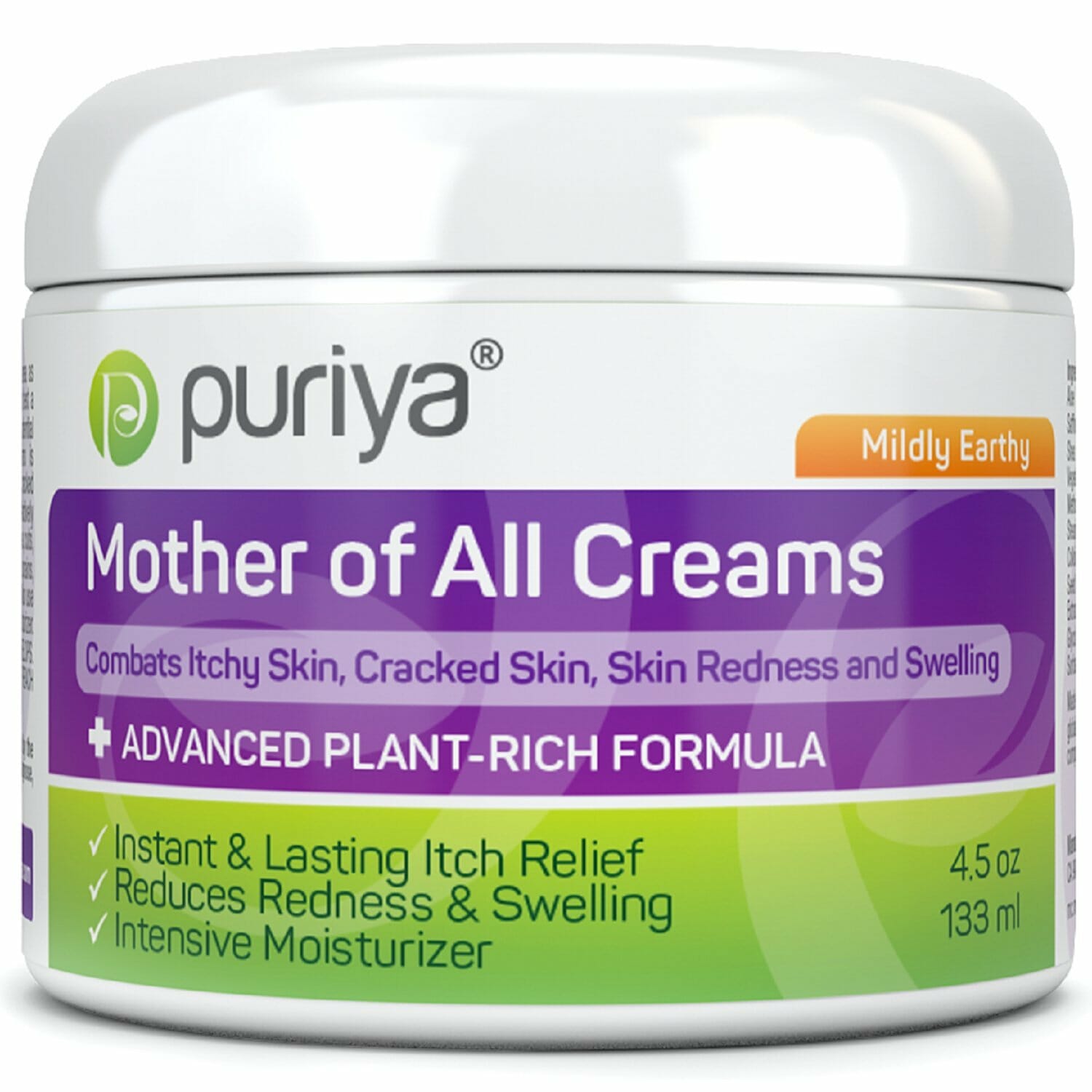
The Best Solution: Avoid the Plant
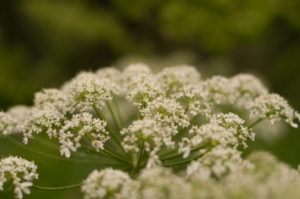 The best obvious solution to Cow Parsnip burns is to avoid the plant at all costs. I learned my lesson the hard way. Know what it looks like and work hard to hike around it. It is not worth the discomfort.
The best obvious solution to Cow Parsnip burns is to avoid the plant at all costs. I learned my lesson the hard way. Know what it looks like and work hard to hike around it. It is not worth the discomfort.
It is always a good idea to wear long pants when hiking in the Alaskan wilderness. Cow Parsnip is not the only poisonous plant you will encounter, so protect your skin with long hiking pants when possible.
Know the Dangers of Hiking in Alaska
It is important if you are going to do unguided backcountry hiking in Alaska to understand the dangers. Study up on whta you may encounter in Alaksa before you hop on the plane. Below are some potential dangers you want to understand before you go.
- Poisonous Plants
- Glacier and Ice Dangers
- Basic Wildlife Behaviors
- How to Avoid Wildlife Attacks
- How to Pack a Basic Emergency First Aid Kit
Alaska is a wonderful place and you will have the time of your life on your Alaskan vacation. Understanding a few things about the dangers will help make your Alaska vacation an Epic Adventure!

